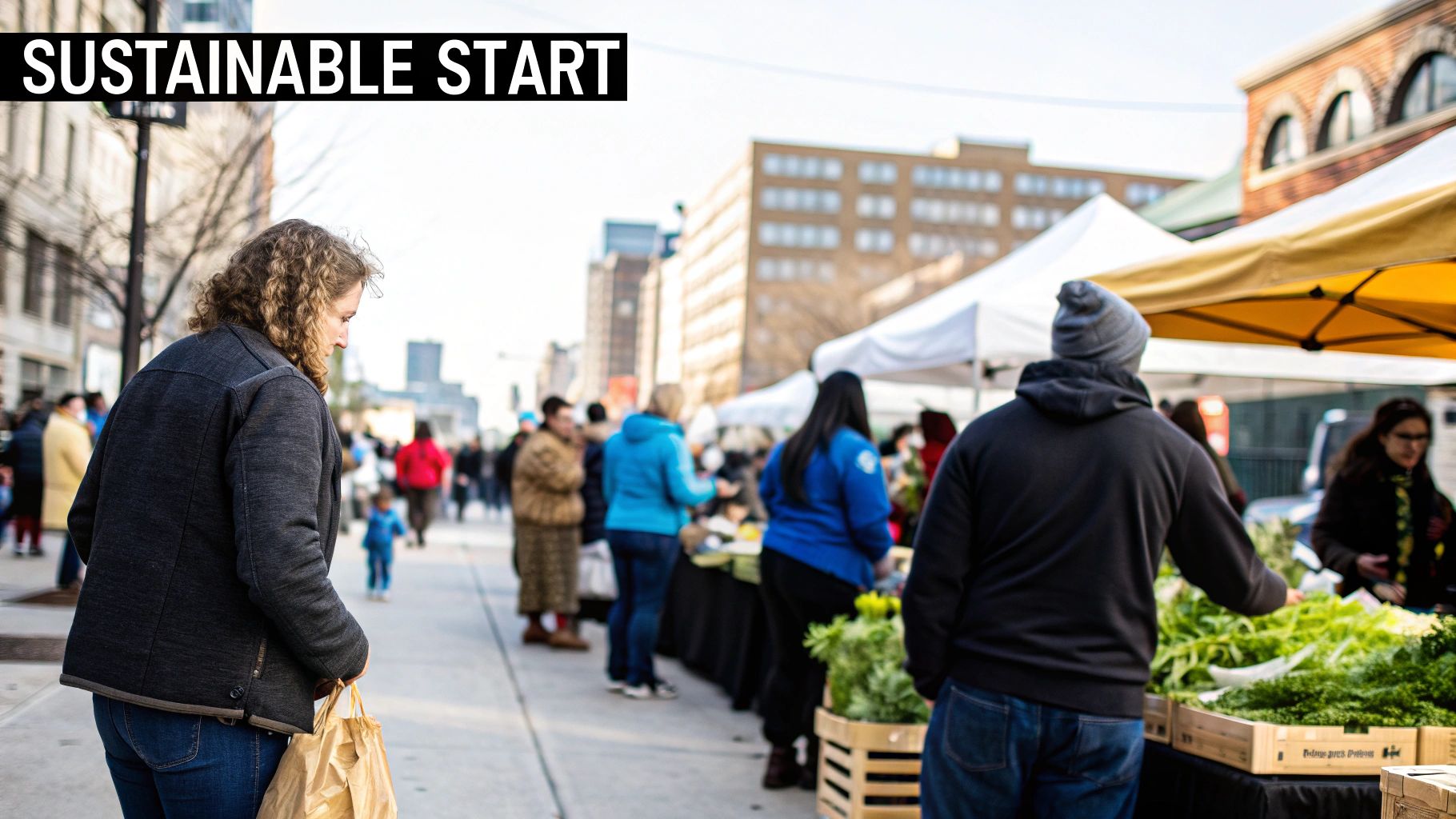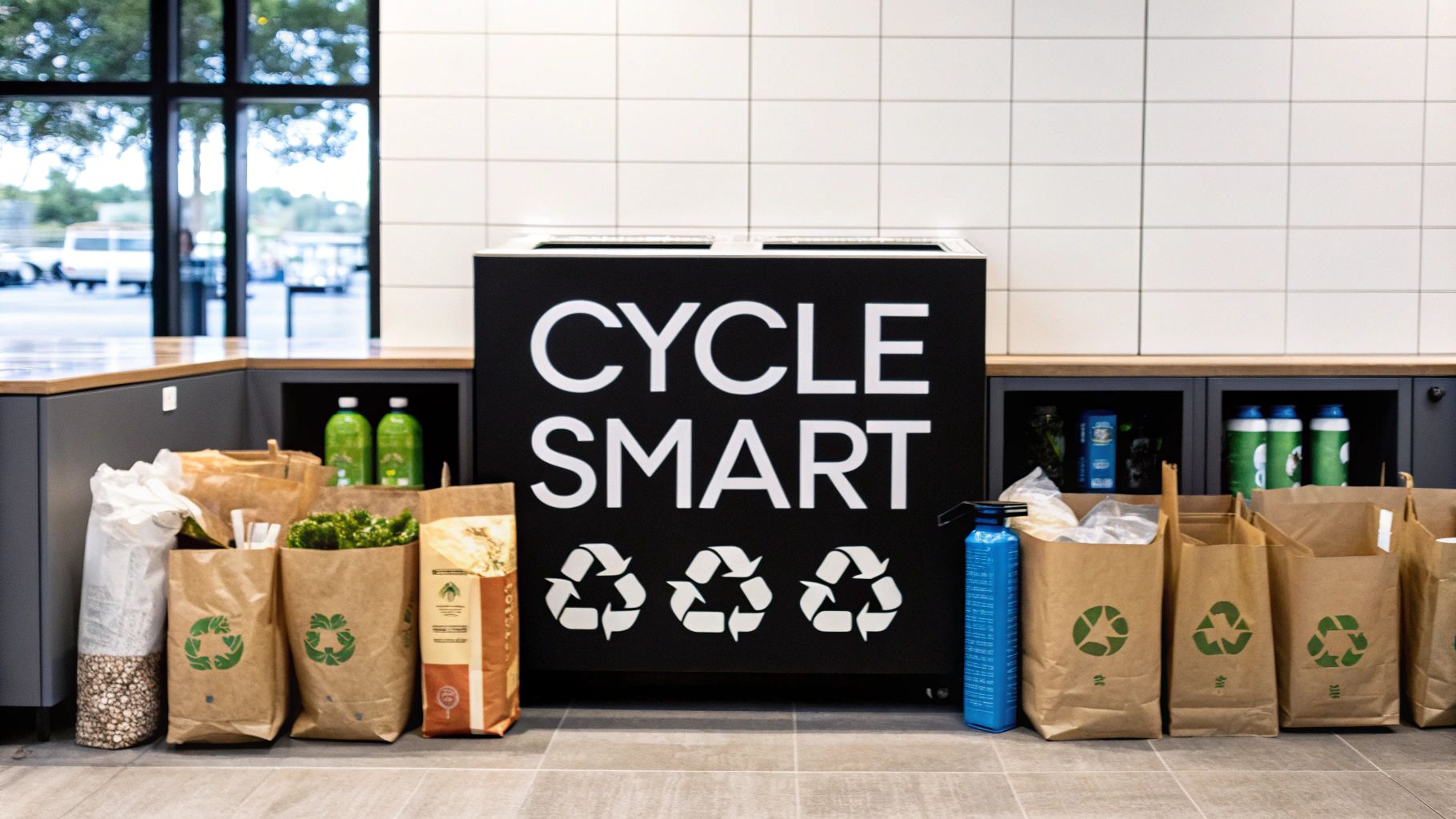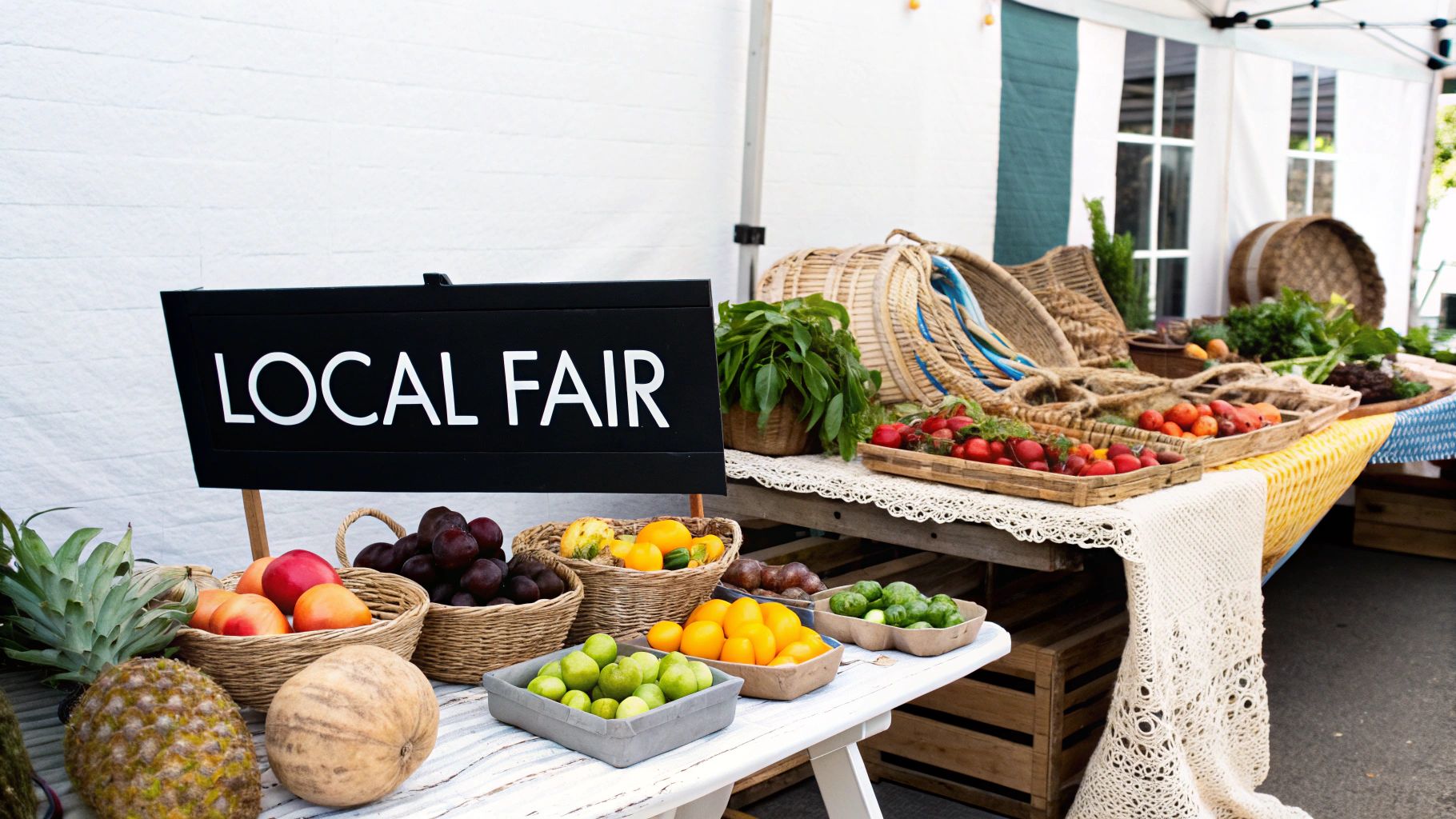
Why Your Shopping Choices Actually Matter
It's easy to feel overwhelmed by global issues like climate change and social injustice, wondering if individual actions truly make a difference. Surprisingly, when it comes to sustainability, your shopping habits hold significant power. Each purchase acts as a vote for the kind of world you want to build, collectively influencing the marketplace.
Consider the impact of choosing a sustainably made t-shirt over a conventionally produced one. The sustainable option likely uses less water and energy, resulting in fewer emissions and supporting fairer labor practices. This seemingly small decision, multiplied across millions of consumers, sends a strong message to brands about what truly matters. It encourages them to embrace eco-friendly practices and invest in ethical supply chains.
Furthermore, sustainable shopping benefits not only the environment but also social equity. By supporting companies committed to fair wages and safe working conditions, you contribute to a more just and equitable global economy. For more information on related issues, explore our sitemap.
The Ripple Effect of Conscious Consumerism
Sustainable shopping has become a global trend, reflecting growing awareness of the connection between consumer choices and global challenges. By 2024, 89% of global consumers reported making changes to their shopping habits to be more environmentally conscious. In the U.S. alone, spending on eco-friendly goods reached $217 billion in 2025, with projections exceeding $400 billion by 2032. This highlights the potential of collective consumer power. Learn more about the impact of these choices through these eco-conscious consumer statistics.
These shifts in consumer behavior influence the entire supply chain. Increased demand for sustainable materials, like organic cotton or recycled plastic, encourages producers to adopt more environmentally sound practices. This generates a positive feedback loop, fostering innovation and accelerating the shift towards a more circular economy.

Ultimately, your shopping choices are important because they directly influence business practices. By aligning your spending with your values, you're not just buying a product; you're investing in a more sustainable and equitable future. This empowers you to be a conscious consumer, making informed decisions that reflect a commitment to a better world.
Decoding Green Claims: How to Identify Truly Sustainable Brands

"Eco-friendly" and "sustainable" labels seem to be everywhere these days. But how can you tell which brands are genuinely committed to sustainability and which are simply engaged in greenwashing? It's a critical question for conscious consumers.
Look Beyond the Label: Investigating Brand Transparency
Identifying truly sustainable brands requires a deeper look than just catchy slogans. Transparency is key. Look for brands that openly share details about their supply chain, manufacturing processes, and environmental impact. Authentically sustainable brands will be upfront about their practices, both the positive and the areas where they are still striving to improve.
This includes specifics about their sourcing of materials. Where do the raw materials originate? Are they sustainably harvested? Does the brand utilize recycled content? A transparent company will readily provide this information. Furthermore, investigate their manufacturing methods. Do they minimize waste and pollution? Is energy efficiency a priority?
Certification Check: Understanding Legitimate Eco-Labels
Certifications can be valuable tools, but it's crucial to understand what each certification represents and its level of stringency. Some certifications hold significantly more weight than others. For instance, certifications like Fair Trade, the Global Organic Textile Standard (GOTS), and the Forest Stewardship Council (FSC) are generally well-regarded. These require brands to meet specific criteria, providing greater assurance about their sustainability practices.
However, be cautious of lesser-known certifications, especially those created by brands themselves. These may lack independent verification and could potentially be misleading. Therefore, careful research is essential to understand the legitimacy of any given certification.
To help illustrate the significance of verified certifications, let's look at a few common examples:
To help illustrate the significance of verified certifications, let's consult a helpful resource:
The following table offers a quick guide to some of the most common sustainability certifications you'll encounter:
| Certification | Product Categories | What It Means | Reliability Rating |
|---|---|---|---|
| Fair Trade | Coffee, chocolate, textiles, etc. | Ensures fair prices and working conditions for producers in developing countries. | High |
| Global Organic Textile Standard (GOTS) | Textiles | Certifies organic fibers and environmentally and socially responsible manufacturing. | High |
| Forest Stewardship Council (FSC) | Wood and paper products | Ensures responsible forest management. | High |
| B Corp | Various | Certifies companies that meet high standards of social and environmental performance, accountability, and transparency. | High |
| Cradle to Cradle Certified | Various | Evaluates products based on material health, material reutilization, renewable energy and carbon management, water stewardship, and social fairness. | High |
| OEKO-TEX Standard 100 | Textiles | Certifies that textiles are free from harmful substances. | Moderate |
| Recycled Content | Various | Indicates that a product contains a certain percentage of recycled materials. | Moderate (depends on verification) |
| Biodegradable | Various | Means a product can break down naturally under certain conditions. | Moderate (lacks standardization) |
This table highlights the importance of looking for established, rigorous certifications when assessing a brand’s sustainability claims.
Research shows that consumers are increasingly prioritizing sustainable products. Statista reports that 72% of consumers are buying more eco-friendly products compared to five years ago, and they are willing to pay up to 24% more for sustainable goods.
Engaging with Sustainable Communities and Resources
Staying informed about sustainability is an ongoing process. Connecting with online communities, forums, and organizations dedicated to sustainable living can be invaluable. These groups often share insights and information about brands, certifications, and emerging best practices.
Furthermore, online resources such as Good On You and Ethical Consumer provide ratings and information about brands based on a variety of environmental and social criteria. These tools can be helpful for quick checks while shopping. By utilizing these resources and engaging with informed communities, you can become a more discerning and empowered sustainable shopper, aligning your purchases with your values.
Beyond The 3 Rs: Mastering The Full Sustainability Spectrum

While "Reduce, Reuse, Recycle" provides a solid foundation, truly sustainable shopping involves a more thoughtful approach. We need to expand our understanding beyond these basic principles and explore a broader spectrum of sustainability. It's similar to learning a musical instrument: the basic chords are essential, but true mastery comes from understanding all the notes and techniques.
Embracing The Expanded 5 Rs: Refuse, Reduce, Reuse, Repurpose, Recycle
Adding "Refuse" and "Repurpose" to the original 3 Rs significantly changes how we interact with consumption. Refusing begins with consciously deciding against items we don't truly need. This might include promotional giveaways, excessive packaging, or single-use plastics. Politely declining these items reduces demand and contributes to breaking the cycle of overproduction.
Bringing your own reusable bag to the grocery store, for example, is a practical way to refuse excess plastic.
Reducing goes further than simply buying less. It requires us to carefully consider our purchases. Do we really need this item? Could we borrow it instead? Implementing a 30-day pause before buying non-essential items helps control impulsive spending and promotes more mindful consumption.
Next, Reusing items extends their lifespan and reduces waste. This could involve using reusable water bottles, coffee cups, and food containers. Keeping a home inventory can also be extremely helpful for reusing items you already own, preventing unnecessary duplicate purchases.
Repurposing is about creatively transforming items for new uses. An old t-shirt can become cleaning rags, while glass jars can be used for storage. Repurposing extends the life of products and lessens our dependence on new resources. It's like giving an item a second life, minimizing waste and sparking creativity.
Finally, Recycling should be the last option. While it’s important, we need to remember that recycling isn't a perfect solution. It uses energy and resources, and not all materials can be recycled. Furthermore, incorrect recycling practices, like including non-recyclable items, can contaminate the entire recycling stream. Knowing your local recycling guidelines and selecting products made from recycled materials helps complete the cycle.
Realistic Sustainability For Everyday Life
Putting these expanded principles into practice doesn't mean making radical lifestyle changes. Small, consistent steps can have a substantial overall effect. Sustainable shopping becomes less of a chore and more of an integrated practice of making thoughtful decisions.
By making conscious choices daily – from declining a free pen to repurposing an old sweater – we contribute to a more sustainable future. This approach helps us become more aware consumers, aligning our purchasing habits with our values and making a positive impact on the marketplace.
Shopping Sustainably Without Breaking the Bank

Many people believe sustainable shopping is expensive. While some sustainable products may cost a bit more, many ways exist to lessen your environmental impact without overspending. It's about making informed choices and shifting your perspective, rather than simply buying the priciest "green" items.
Prioritizing Sustainable Spending
One key to affordable sustainable shopping is prioritization. Think of your sustainability budget like any other budget: allocate funds where they'll have the most significant effect. Begin by evaluating where your current spending habits create the largest environmental footprint. For some, this might be fast fashion; for others, it could be food waste.
Once you’ve identified these key areas, consider changes offering the best balance of environmental benefit and affordability. For example, investing in a few reusable, high-quality items, like a water bottle or shopping bag, can significantly reduce reliance on disposables in the long run. When considering sustainability at home, explore water conservation faucets.
Smart Shopping Strategies for Sustainability on a Budget
Several practical strategies can reduce the cost of sustainable shopping. Timing your purchases strategically can save money. Buying seasonal produce is often cheaper and more environmentally friendly due to reduced transportation. Buying bulk staples like grains, nuts, and cleaning supplies minimizes packaging and cost per unit.
Leveraging community resources like clothing swaps, library book sales, and Buy Nothing groups provides access to gently used items at little to no cost. This "sharing economy" reduces demand for new products and builds community connections. For further options, explore the FindTopTrends product sitemap. This resembles borrowing tools from a neighbor rather than buying new—economical and resource-efficient. This reflects the desire for sustainability despite economic challenges.
A 2024 global survey revealed consumers are willing to pay 9.7% more for sustainably produced goods, even with rising living costs. This highlights the growing influence of environmental concerns in purchasing decisions. Learn more about this consumer trend.
To further illustrate potential cost savings, let's examine a cost comparison. The following table compares the cost of sustainable products versus conventional products, taking into account lifespan and cost-per-use.
Cost Comparison: Sustainable vs. Conventional Products
| Product Category | Average Price Premium (%) | Estimated Lifespan Increase | Cost Per Use Difference | Long-term Savings |
|---|---|---|---|---|
| Reusable Water Bottle | 150% (compared to a single-use plastic bottle) | Thousands of uses | Significantly lower | High |
| Cloth Shopping Bags | 200% (compared to a single-use plastic bag) | Hundreds of uses | Significantly lower | High |
| Energy-Efficient Lightbulbs | 200-400% (compared to incandescent bulbs) | 10-25x longer lifespan | Lower due to reduced energy consumption | Moderate to High |
| Organic Produce | 20-100% (depending on product) | Similar/Slightly Longer | Sometimes higher, sometimes lower (factor in reduced pesticide exposure) | Variable, potential health benefits |
| Ethically Made Clothing | 50-200% (compared to fast fashion) | 2-3x longer lifespan | Potentially lower due to increased durability | Moderate to High |
This table provides a general overview. Actual savings will vary based on individual consumption habits and product choices. However, it highlights the potential for long-term savings through sustainable purchases.
Sustainable Choices: A Path to Long-Term Savings
While some sustainable options have a higher initial cost, they frequently offer long-term savings. Durable, well-made products typically last longer, reducing the need for replacements. A high-quality, ethically produced pair of shoes might cost more upfront, but lasting twice as long as a cheaper alternative results in a lower cost per wear. Similarly, repairing clothes instead of constantly buying new ones saves money and resources.
Ultimately, sustainable shopping isn’t about perfection or excessive spending. It’s a journey of continuous improvement. By prioritizing, making smart choices, and adopting mindful consumption, you can positively impact the planet without emptying your wallet.
Building a Sustainable Wardrobe That Actually Looks Good
Building a sustainable wardrobe isn't about compromising your personal style. It's about making thoughtful decisions that benefit both your appearance and the environment. Think of it like constructing a house: a solid foundation of quality pieces allows you to create a variety of interesting and stylish outfits for years to come. This changes your relationship with clothing from chasing fleeting trends to embracing enduring style.
The Power of the Capsule Wardrobe: Less Is More
A capsule wardrobe is a carefully selected collection of essential, versatile clothing items that can be mixed and matched to create numerous outfits. This approach minimizes waste, promotes mindful purchasing, and simplifies your daily routine. Want to learn more? Check out this resource: How to master a capsule wardrobe via FindTopTrends' categories.
Instead of constantly chasing fleeting trends, concentrate on building a collection of high-quality, timeless pieces that truly reflect your personal style. This allows you to express your individuality without contributing to the fast-fashion cycle. Focus on neutral colors, classic silhouettes, and durable fabrics that can withstand the test of time.
Quality Over Quantity: Investing in Longevity
Choosing quality garments is a core principle of sustainable fashion. Investing in well-made pieces, even if they have a higher initial price tag, often saves you money in the long run. These items are designed to last longer, reducing the need for frequent replacements. This not only benefits your budget but also minimizes the environmental impact associated with the constant production and disposal of clothing.
Decoding Fabric Labels: Choosing Sustainable Materials
Understanding fabric labels is key to making informed choices. Look for natural, sustainable fabrics like organic cotton, linen, hemp, and Tencel. These materials have a significantly lower environmental impact compared to conventional options. Also, explore innovative recycled materials, often made from recycled plastic bottles or pre-consumer textile waste.
Extending the Life of Your Clothes: Care and Repair
Proper care can dramatically extend the lifespan of your clothing. By following care instructions, washing clothes less frequently, and opting for air-drying, you can reduce wear and tear. Learning basic mending skills can also empower you to repair minor damage, preventing you from discarding garments prematurely and minimizing textile waste.
Exploring Fashion Alternatives: Consignment, Swaps, and Rentals
The fashion landscape is constantly evolving, offering exciting new ways to refresh your style sustainably. Consignment stores, clothing swaps, and rental services offer access to diverse clothing options without contributing to new production. These alternatives not only reduce waste but also provide a fantastic opportunity to discover unique pieces and experiment with different styles. They offer affordable access to high-quality brands, lessening the demand for fast fashion and creating a more circular fashion ecosystem that promotes both sustainability and individual expression.
Mastering Sustainable Grocery Shopping
Your weekly grocery shopping trip offers a great chance to embrace sustainability. This goes beyond simply buying organic produce; it's about adopting a comprehensive approach to food shopping that reduces your environmental impact while still enjoying flavorful, nutritious meals.
Reducing Packaging Waste: A Practical Approach
One of the most obvious environmental consequences of grocery shopping is the amount of packaging waste generated. Heaps of plastic, cardboard, and Styrofoam often end up in landfills, contributing to pollution. However, several practical strategies can drastically reduce this waste. Bulk buying items like grains, nuts, and dried fruits is an excellent starting point.
Bringing your own reusable containers for these items eliminates packaging entirely. This not only means less waste but often translates to lower prices as well.
Additionally, consider product packaging carefully when making selections. Choose products with minimal packaging or packaging made from recycled and recyclable materials. Whenever possible, opt for loose produce rather than pre-packaged options. This seemingly small change, repeated over numerous shopping trips, significantly reduces waste.
Navigating Food Certifications: Which Labels Truly Matter
Understanding food labels can be confusing, with terms like "organic," "fair trade," and "sustainable" often used without clear distinctions. Knowing what these labels represent empowers you to make informed choices. Organic certification, for example, signifies that the food was grown without synthetic pesticides, herbicides, and fertilizers. Fair trade certification guarantees that producers in developing nations receive equitable compensation for their products.
However, not all certifications are equal. Some hold greater significance than others, and some may even be misleading. Researching various certifications will help you identify labels aligned with your values and confirm that the products meet specific standards. This supports both environmental sustainability and ethical labor practices.
Eating Seasonally and Locally: Enhancing Flavor and Sustainability
Eating seasonally and locally provides unexpected benefits for both your taste buds and the planet. Seasonal produce is generally fresher and tastier because it hasn't been transported long distances. Supporting local food systems reduces transportation emissions and bolsters your local economy. You enjoy fresh, flavorful food while reducing your carbon footprint.
Moreover, buying locally often connects you directly with the food producers. Visiting farmers' markets, for instance, provides opportunities to ask about farming practices and build relationships with local growers. This strengthens community ties and offers greater transparency about your food's origin.
Meal Planning and Plant-Forward Eating: Minimizing Food Waste
Food waste is a major contributor to environmental issues. Meal planning is a powerful tool to combat this waste. Planning meals in advance ensures you purchase only what you need, preventing food from spoiling in your refrigerator. This saves you money and minimizes the environmental effects of wasted resources.
Incorporating more plant-forward meals into your diet also promotes sustainability. Plant-based foods typically have a smaller environmental impact than animal products. This doesn’t require becoming fully vegetarian or vegan; simply being more conscious of your meat consumption and exploring plant-based options can make a difference.
Sustainable Seafood and Building Relationships: Supporting Responsible Practices
Choosing sustainable seafood is vital for protecting our oceans. Seek certifications like the Marine Stewardship Council (MSC) label, indicating seafood sourced from sustainably managed fisheries. Building relationships with local fishmongers can offer valuable information about sourcing and sustainability practices for various seafood options.
Similar to buying local produce, knowing your fishmonger allows for personalized recommendations and a deeper understanding of the products. This empowers you to make informed decisions that support responsible fishing practices. For practical storage solutions, consider closet organizers.
Ready to discover the latest trends and high-quality sustainable products? Visit FindTopTrends today for a curated selection designed to improve your daily life. From eco-friendly kitchen gadgets to stylish, sustainable fashion, FindTopTrends makes it easy to find quality and value while supporting a more sustainable world.





